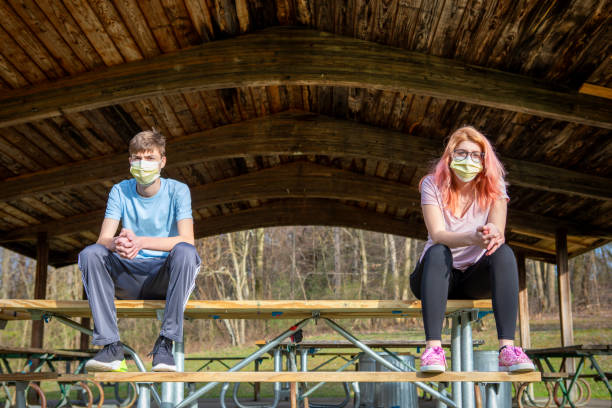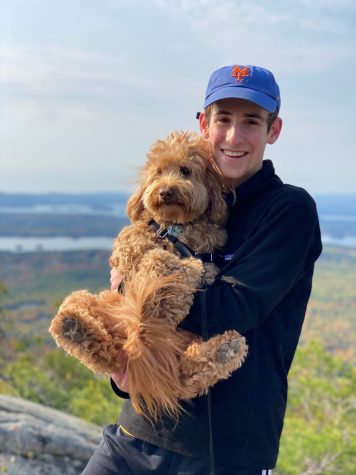Change, Loss, and Growth
How the Pandemic Impacted Relationships
Teenage siblings wearing face masks sitting at a park grove outdoors keeping a social distance during the coronavirus pandemic.
May 24, 2021
This pandemic has undoubtedly been challenging for the South High community. From online classes to virtual clubs, students have seen their lives change dramatically in the past year. Yet while we often fixate on the academic and extracurricular shifts, the most significant challenge for many students has been weathering the social changes. In just one short year, this virus radically altered friendships, dissolved romantic relationships, and led to an uptick in social isolation.
Arguably the most fundamental social change caused by the pandemic has been the near-elimination of coincidental socialization. Coincidental socialization, any interaction not planned in advance, is significant because it is exceptionally informal. It is the socialization that occurs when students bump into each other in the hallway or sit next to each other in class. This type of socialization is unique not only because it does not require pre-determined plans, but also because it does not necessitate that the students interacting have any prior relationship. While these interactions might originally seem trivial, they very frequently build meaningful friendships. This was certainly the case for one South High student. As we discussed one diminished friendship, she noted how “we used to be really close” and that she was “one of my closest friends.” Prior to the pandemic, the two girls would see each other after school at an extracurricular activity and would also talk between classes. But since the pandemic started, they haven’t seen each other once. The pair still send each other occasional text messages, but she reports that the whole relationship “is completely different” now. Looking to the future, she fears that the friendship will never recover, especially when the pair heads off to college. “If you can’t stay in touch with me for a year when we both live in Great Neck, then we are never going to be friends after four years of college when we are likely in different states,” she said.
In addition to friendships, many students have seen romantic relationships come to an end. For one student, the reason largely came down to the lack of physical proximity. Living with a high-risk family member, he was not able to see his girlfriend for nearly 5 months. And once it finally did become safe to meet her in-person, he soon found himself separated from her once more as she left for college. Throughout the many months of their separation, the couple attempted to stay close by frequently texting and video chatting. However, despite their best efforts, they naturally grew apart. While one half of this couple had a lifestyle generally unchanged from the previous year, dominated by virtual-school and homework, the other half was having a variety of new experiences and was changing as a result. Yet for quite some time, the high school student was largely oblivious to the ways his girlfriend was changing. “You don’t see everything when you can’t see them in person,” he said. When his girlfriend finally came home from college, he found their relationship to be radically altered. “She was a completely different person and she saw me as a completely different person,” he lamented. Realizing that the joy of their pre-pandemic relationship had vanished, the couple broke up.
For some students, this past year was challenging not because of a specific relationship but because of the unprecedented isolation it caused. Indeed, this was a defining struggle of the pandemic for one South High student. A self-described extrovert who “thrives on human interaction,” the social consequences of this pandemic hit her particularly hard. These consequences were further heightened by the restrictions put on by her parents. Without school and peers to keep her busy, her mental health declined rapidly. “I was kinda a wreck,” she exclaimed. “I was crying all the time because I just didn’t know what to do with myself.”
But despite all these social hardships, it is crucial to note that all the people I interviewed have gotten back on their feet. Although the girl who lost her friend misses an incredibly close relationship, the pandemic has also given her the time to further develop other relationships, which play an important role in her life. While the boy whose girlfriend went to college was saddened to lose her, the break-up allowed him to dedicate more time to his old friends as well as making new ones. And despite the suffering faced by the extroverted student in the early stages of the pandemic, she too eventually found her footing. Despite their suffering, even in the depths of isolation and despair, there is hope. While the consequences of social loss may seem insurmountable at the moment, these stories show us that not only can emotional hurdles be overcome, they can also make us into better, more resilient people.






